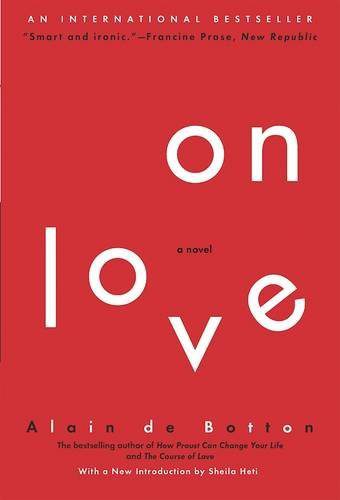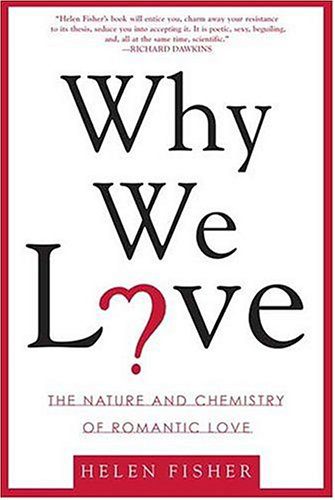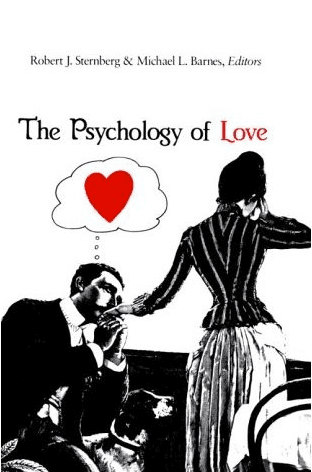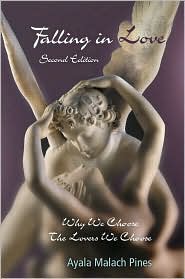 It’s often said that every song, every poem, every novel, every painting ever created is in some way “about” love. What this really means is that love is a central theme, an underlying preoccupation, in humanity’s greatest works. But what exactly is love? How does its mechanism spur such poeticism, and how does it lodge itself in our minds, hearts and souls so completely, so stubbornly, as to permeate every aspect of the human imagination? Today, we turn to 5 essential books that are “about” love in a different way — they turn an inquisitive lens towards this grand phenomenon and try to understand where it comes from, how it works, and what it means for the human condition.
It’s often said that every song, every poem, every novel, every painting ever created is in some way “about” love. What this really means is that love is a central theme, an underlying preoccupation, in humanity’s greatest works. But what exactly is love? How does its mechanism spur such poeticism, and how does it lodge itself in our minds, hearts and souls so completely, so stubbornly, as to permeate every aspect of the human imagination? Today, we turn to 5 essential books that are “about” love in a different way — they turn an inquisitive lens towards this grand phenomenon and try to understand where it comes from, how it works, and what it means for the human condition.
1. ON LOVE
 No superlative is an exaggeration of Alain de Botton’s humble brilliance spanning everything from philosophy to architecture. On Love (public library) is precisely the kind of thoughtful, poetic, highly intelligent tome De Botton has grown famous for. Part novel, part philosophical inquiry into the origin and machinery of romantic love, the book follows the story of a love affair, tracing each stage — from the initial dopamine-driven lovesickness to the despair of love’s demise — through a beautiful blend of intellectual analysis and deeply human felt emotion. In De Botton’s classic style of networked knowledge, the narrative is sprinkled with references to and quotes from the major Western philosophers, yet equally reflective of his signature style of absorbing, highly readable narrative.
No superlative is an exaggeration of Alain de Botton’s humble brilliance spanning everything from philosophy to architecture. On Love (public library) is precisely the kind of thoughtful, poetic, highly intelligent tome De Botton has grown famous for. Part novel, part philosophical inquiry into the origin and machinery of romantic love, the book follows the story of a love affair, tracing each stage — from the initial dopamine-driven lovesickness to the despair of love’s demise — through a beautiful blend of intellectual analysis and deeply human felt emotion. In De Botton’s classic style of networked knowledge, the narrative is sprinkled with references to and quotes from the major Western philosophers, yet equally reflective of his signature style of absorbing, highly readable narrative.
Every fall into love involves [to adapt Oscar Wilde] the triumph of hope over self-knowledge. We fall in love hoping that we will not find in the other what we know is in ourselves – all the cowardice, weakness, laziness, dishonesty, compromise and brute stupidity. We throw a cordon of love around the chosen one, and decide that everything that lies within it will somehow be free of our faults and hence lovable. We locate inside another a perfection that eludes us within ourselves, and through union with the beloved, hope somehow to maintain [against evidence of all self-knowledge] a precarious faith in the species.”
2. WHY WE LOVE
 You might recall biological anthropologist Helen Fisher’s work from this fascinating discussion of how antidepressants impact the experience of romantic love. That’s just one of a myriad equally fascinating facets of love Fisher dissects in Why We Love: The Nature and Chemistry of Romantic Love (public library) — a journey into the mind’s blend of neurochemistry and storytelling, the hormones and neurotransmitters that make us feel certain emotions, and the stories we choose to tell ourselves about those emotions. Fisher outlines the three key components of love, each involving different but connected brain systems — lust, driven by androgens and estrogens, the craving for sexual gratification; attraction, characterized by high dopamine and norepinephrine levels and low serotonin, euphoria when things are going well and terrible mood swings when they’re not, focused attention, obsessive thinking, and intense craving for the individual; and attachment, commandeered by the hormones oxytocin and vasopressin and associated with the sense of calm, peace, and stability one feels with a long-term partner — and brings a researcher’s lens to fundamental questions about passion and obsession, joy and jealousy, monogamy and divorce.
You might recall biological anthropologist Helen Fisher’s work from this fascinating discussion of how antidepressants impact the experience of romantic love. That’s just one of a myriad equally fascinating facets of love Fisher dissects in Why We Love: The Nature and Chemistry of Romantic Love (public library) — a journey into the mind’s blend of neurochemistry and storytelling, the hormones and neurotransmitters that make us feel certain emotions, and the stories we choose to tell ourselves about those emotions. Fisher outlines the three key components of love, each involving different but connected brain systems — lust, driven by androgens and estrogens, the craving for sexual gratification; attraction, characterized by high dopamine and norepinephrine levels and low serotonin, euphoria when things are going well and terrible mood swings when they’re not, focused attention, obsessive thinking, and intense craving for the individual; and attachment, commandeered by the hormones oxytocin and vasopressin and associated with the sense of calm, peace, and stability one feels with a long-term partner — and brings a researcher’s lens to fundamental questions about passion and obsession, joy and jealousy, monogamy and divorce.
Sample her work with this fantastic TED talk on the brain in love:
3. THE PSYCHOLOGY OF LOVE
 Originally written in 1988, The Psychology of Love (public library) is an anthology of 16 academic, though highly readable, papers dissecting various aspects of love. The collection is divided into five parts, each focusing on a specific facet of understanding love, from global theories that explain the phenomenon, to the psychology of relationship maintenance, to a critical overview of the field of love research.
Originally written in 1988, The Psychology of Love (public library) is an anthology of 16 academic, though highly readable, papers dissecting various aspects of love. The collection is divided into five parts, each focusing on a specific facet of understanding love, from global theories that explain the phenomenon, to the psychology of relationship maintenance, to a critical overview of the field of love research.
For many people, love is the most important thing in their lives. Without it, they feel as though their lives are incomplete. But what is “it”? This question has been addressed by poets, novelists, philosophers, theologians, and, of course, psychologists, among others. This book presents the attempts of contemporary psychologists whose field of expertise is the study of love and close relationships to figure out just what love is.
The book is best-read in tandem with The New Psychology of Love, the 2008 follow-up to the original title — a priceless parallel that captures how scientific and technological innovation has improved and, in some cases, shifted our understanding of love’s psychological underbelly, and perhaps more importantly, the curious fact that nearly 25 years later, we still have no succinct and singular definition of “love.”
4. FALLING IN LOVE
 Have you ever encountered a couple with disproportionately unequal attraction levels, only to find yourself thinking that the less-attractive person “must be really funny” or “is probably some sort of genius” or some other rational explanation of the seemingly mismatched pairing? In Falling in Love: Why We Choose the Lovers We Choose (public library), social psychologist and researcher Ayala Malach Pines tackles this and many other mysteries of the psychology of mate selection through a masterfully woven mesh of social and clinical approaches to understanding romance. The book extracts its key insights from three case studies: An interview-based study of 100 romantic relationships, a cross-cultural, data-driven juxtaposition of American and Israeli accounts of falling in love, and another interview series of 100 couples examining their reasons for falling in love in the context of turmoil later in the relationship.
Have you ever encountered a couple with disproportionately unequal attraction levels, only to find yourself thinking that the less-attractive person “must be really funny” or “is probably some sort of genius” or some other rational explanation of the seemingly mismatched pairing? In Falling in Love: Why We Choose the Lovers We Choose (public library), social psychologist and researcher Ayala Malach Pines tackles this and many other mysteries of the psychology of mate selection through a masterfully woven mesh of social and clinical approaches to understanding romance. The book extracts its key insights from three case studies: An interview-based study of 100 romantic relationships, a cross-cultural, data-driven juxtaposition of American and Israeli accounts of falling in love, and another interview series of 100 couples examining their reasons for falling in love in the context of turmoil later in the relationship.
Is love really blind? A large body of theory and research, as well as my own research and many years of clinical work, have convinced me that the answer to this question is a firm no!
From whether proximity is the hidden matchmaker of true romance to how conscious choices increase the likelihood of finding “true love,” Falling in Love is deeply fascinating yet warmly written, devoid of the hollow ring of academic pontification without compromising the rigor of the research or the depth of its conclusions.
5. A GENERAL THEORY OF LOVE
 Besides having a cover the epitome of design’s capacity for communicating powerful concepts with brilliant visual simplicity, A General Theory of Love (public library) by psychologists Thomas Lewis, Fari Amini, and Richard Lannon is also a first-of-its-kind synthesis of research and poeticism, bringing a social science eye to the natural history of the grandest emotion.
Besides having a cover the epitome of design’s capacity for communicating powerful concepts with brilliant visual simplicity, A General Theory of Love (public library) by psychologists Thomas Lewis, Fari Amini, and Richard Lannon is also a first-of-its-kind synthesis of research and poeticism, bringing a social science eye to the natural history of the grandest emotion.
Since the dawn of our species, human beings in every time and place have contended with an unruly emotional core that behaves in unpredicted and confusing ways. Science has been unable to help them. The Western world’s first physician, Hippocrates, proposed in 450 B.C. that emotions emanate from the brain. He was right — but for the next twenty-five hundred years, medicine could offer nothing further about the details of emotional life. Matters of the heart were matters only for the arts — literature, song, poetry, painting, sculpture, dance. Until now.
Eloquent and eye-opening, A General Theory of Love illuminates “hard science” findings across brain function and neurochemistry though a humanistic prism that offers a richer, deeper understanding of the heart’s will.



